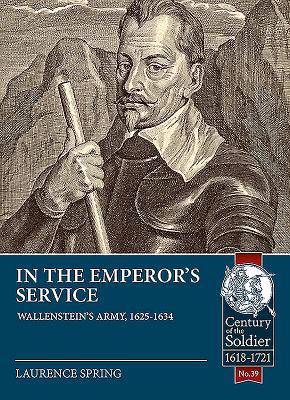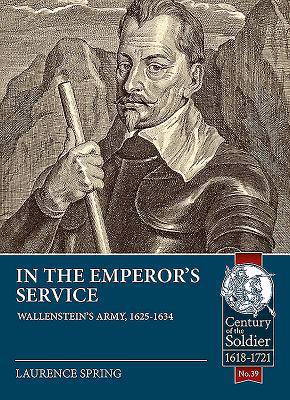
- Retrait gratuit dans votre magasin Club
- 7.000.000 titres dans notre catalogue
- Payer en toute sécurité
- Toujours un magasin près de chez vous
- Retrait gratuit dans votre magasin Club
- 7.000.000 titres dans notre catalogue
- Payer en toute sécurité
- Toujours un magasin près de chez vous
Description
Albrecht von Wallenstein! His very name is synonymous with the Thirty Years War. From a poor nobleman he rose to become the Duke of Friedland and Mecklenburg. Many see his assassination at Eger in 1634 as the end of the "interesting" period of the war, since he was the last of the war's titans to be killed.
However, his army continued to serve the Emperor loyally to the end of the war, and a few regiments existed well into the 20th century. These would see action in the First World War as part of the Austrian Army and, after the Austrian Anschluss of March 1938, in the German Army during the Second World War.
Despite Wallenstein's Army being infamous, very little has been written about it, especially in English. However, by using archives from record offices from Germany, Czechoslovakia (formerly Bohemia), Sweden and Britain, as well as the latest archaeological evidence from mass graves of the Thirty Years War period, this book looks to rectify this by giving a vivid account of what life was like for a soldier in Wallenstein's Army.
The chapters include recruiting the army, its officers, as well as the logistics of clothing, equipping and feeding the army. There are also chapters on regimental colors, how to quarter an army, and the arms industry, plus case studies on siege warfare using Stralsund and the Alte Veste as an example, as well as Wallenstein's tactics at the Battle of Lutzen.
It also dispels the myths that have arisen about Wallenstein's Army, such as it being one of the first to be well clothed during the war, and did not follow the Catholic League's General Johan von Tilly's alleged doctrine of "a ragged soldier and a bright musket" (which in itself is incorrect).
Therefore, this book will be essential reading to anyone interested in the Thirty Years War, the English Civil War or warfare in the early modern period.
However, his army continued to serve the Emperor loyally to the end of the war, and a few regiments existed well into the 20th century. These would see action in the First World War as part of the Austrian Army and, after the Austrian Anschluss of March 1938, in the German Army during the Second World War.
Despite Wallenstein's Army being infamous, very little has been written about it, especially in English. However, by using archives from record offices from Germany, Czechoslovakia (formerly Bohemia), Sweden and Britain, as well as the latest archaeological evidence from mass graves of the Thirty Years War period, this book looks to rectify this by giving a vivid account of what life was like for a soldier in Wallenstein's Army.
The chapters include recruiting the army, its officers, as well as the logistics of clothing, equipping and feeding the army. There are also chapters on regimental colors, how to quarter an army, and the arms industry, plus case studies on siege warfare using Stralsund and the Alte Veste as an example, as well as Wallenstein's tactics at the Battle of Lutzen.
It also dispels the myths that have arisen about Wallenstein's Army, such as it being one of the first to be well clothed during the war, and did not follow the Catholic League's General Johan von Tilly's alleged doctrine of "a ragged soldier and a bright musket" (which in itself is incorrect).
Therefore, this book will be essential reading to anyone interested in the Thirty Years War, the English Civil War or warfare in the early modern period.
Spécifications
Parties prenantes
- Auteur(s) :
- Editeur:
Contenu
- Nombre de pages :
- 216
- Langue:
- Anglais
- Collection :
- Tome:
- n° 39
Caractéristiques
- EAN:
- 9781911628569
- Date de parution :
- 16-05-19
- Format:
- Livre broché
- Format numérique:
- Trade paperback (VS)
- Dimensions :
- 178 mm x 246 mm
- Poids :
- 589 g







